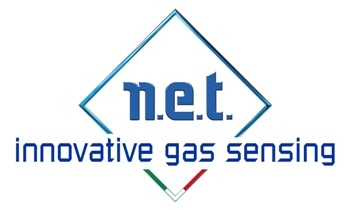In the commercial refrigeration industry, gas detection is gaining increasing significance. Gas detection and gas leakage systems are now compulsory for the majority of plants, courtesy of recently introduced rules and regulations.
.png)
Significance of Gas Detection Systems
For facilities like industrial plants, malls, hospitals, offices, and hotels, having a dependable gas detection system is consequently more crucial now than ever before. The system’s overall dependability is contributed to by various influencing factors.
The most important factor is the gas sensor itself and its maintenance. Gas sensors which are unreliable or badly maintained may result in costly false alarms or, worse, even more costly unnoticed alarm conditions which could pose serious risks to safety. That being said, frequent calibration and maintenance can be equally as time-consuming and expensive.
IREF Line of Sensors
It is for the above reasons that the IREF line of sensors has been developed by N.E.T. This is based on Non Dispersive Infrared technology (NDIR). As well as offering the best available gas selectivity (particularly when compared with Metal oxide semiconductor gas sensors (MOS) which are extremely popular as a result of their low cost), NDIR gas sensors guarantee a 1 year calibration span and are fail-safe.
When choosing sensors for gas detection systems, one should not just consider the upfront costs, but rather the Total Cost of Ownership (TCO). This includes the costs of operation, maintenance, and downtime. The anticipated lifespan of the sensor should also be taken into consideration.
Advantages of IREF Dual-Beam/Dual-Detector Sensor
IREF’s dual-beam/dual-detector sensor design ensures that it fails to a safe condition. This contrasts the unresponsive condition of a semiconductor sensor which requires frequent (sometimes monthly) calibration and bump testing to guarantee that it functions correctly.
A 1 year calibration span is guaranteed by IREF sensors, as a result of their superior stability and immunity to inhibiting and poisonous chemicals. Furthermore, IREF’s MTBF exceeds five years, which is vastly superior to a semiconductor sensor lifetime which may be as low as 2 years.
.jpg)
- IREF reliability is certified to a quality of which other refrigerant sensors are unable to boast: it is both SIL2 (TUV) and EN 50271 approved.
- IREF sensors are designed in such a way that ensures they fit into fixed gas monitors which comply with the following regulations: EU 517/2014 (“F-Gas regulation”), ISO 5149-3:2014, EN 378:2016, EN 14624:2012, CSA B52-13, ASHRAE 15-2016.
It is also straightforward to integrate IREF sensors. They arrive equipped with integrated microprocessor firmware and electronics to deliver temperature-compensated and linearized outputs in analog voltage, P2P standard, or ModBus format.
Additionally, this is the market’s only refrigerant sensor which is available in 7-series (5 pins with a diameter of 32 mm) which means it fits comfortably into a detector or a standard head. If a head which is ATEX/IECEx certified is required for an IREF sensor, N.E.T. can provide one.
Summary
IREF sensors are drop-in interchangeable courtesy of mechanical and electronic compatibility. It is possible to substitute a sensor on the field without needing to worry about the detector’s calibration. Alternatively, multiple gas detection capability can be developed around the same electronics and detector housing.

This information has been sourced, reviewed and adapted from materials provided by Nano Environment Technology (N.E.T).
For more information on this source, please visit Nano Environment Technology (N.E.T).